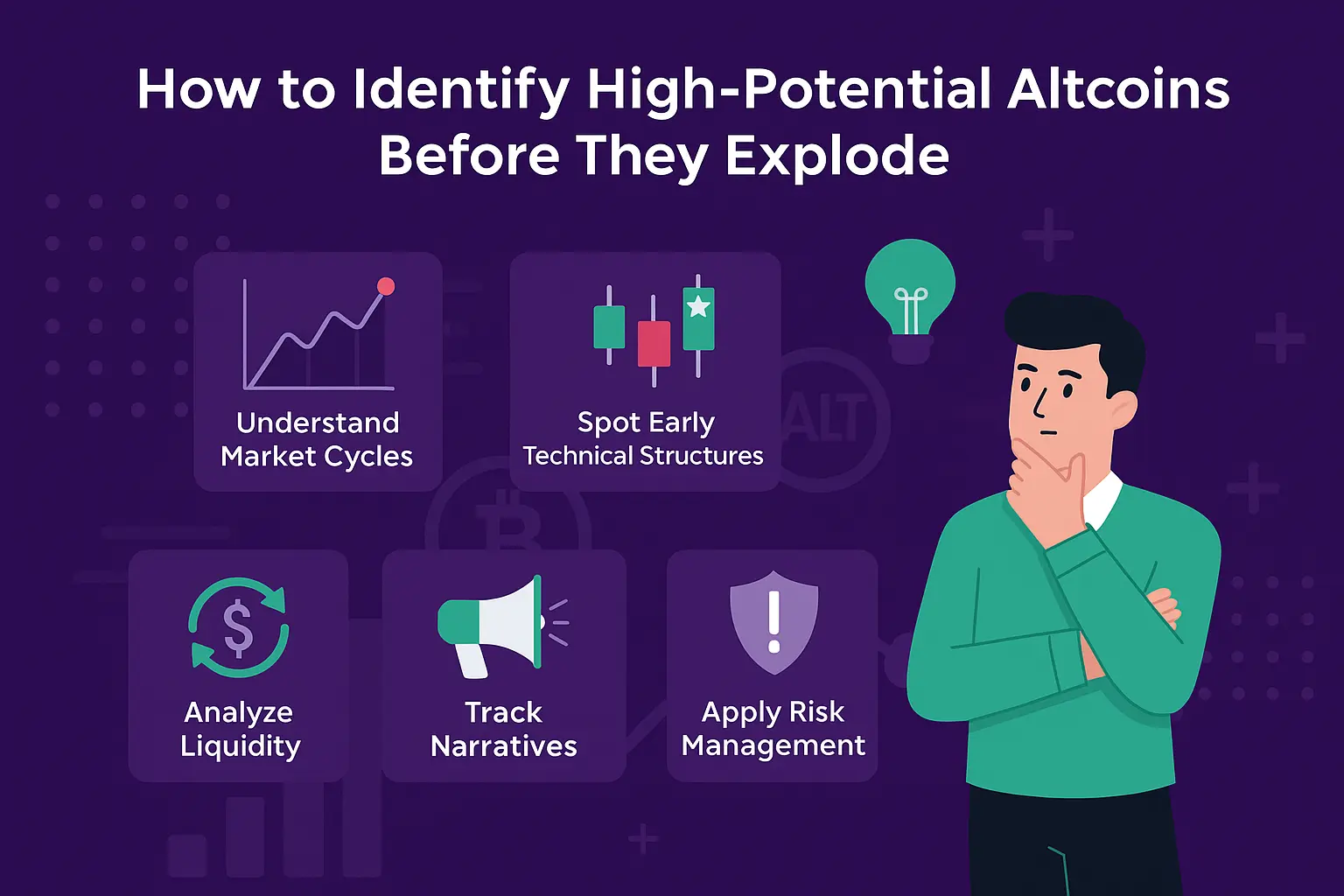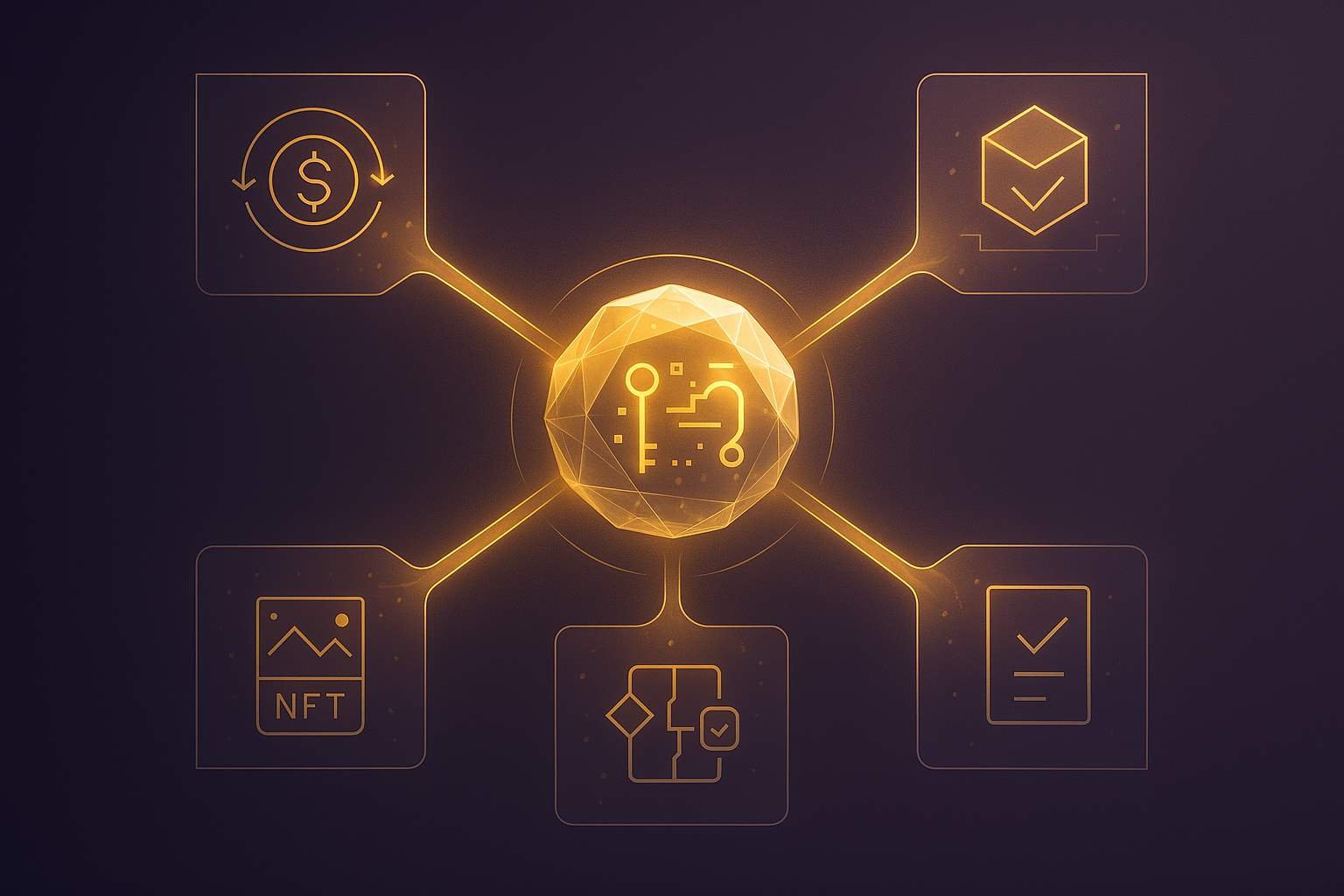Introduction to Cryptocurrency Transactions
Cryptocurrency is a digital form of value that operates independently of any single entity, company, or government.
Unlike traditional money, where your bank balance can be withdrawn as physical cash, cryptocurrency transactions are purely data entries recorded on a tamper-proof, distributed ledger called a blockchain.
On major blockchains like Bitcoin, Ethereum, and Solana, no actual “coins” are exchanged. Instead, the blockchain updates ownership records tied to the crypto wallets of the sender and receiver with each transaction.
Blockchain technology enables these transactions to be proposed, verified, and recorded by a global network of volunteers known as “nodes.” These computers collaborate to ensure only valid transactions are processed and permanently stored on the ledger.
What Do You Need to Send a Crypto Transaction?
Before diving into the step-by-step process of a crypto transaction, let’s look at the key components required for a peer-to-peer payment.
To complete a crypto transaction, you need three main elements:
- A cryptocurrency wallet
- A blockchain network
- Cryptocurrency to cover the transaction/gas fee
Cryptocurrency Wallets
Crypto wallets are classified as either hot wallets or cold wallets, depending on their internet connectivity.
- Hot Wallets: These are software applications installed on devices like smartphones or computers. They’re always online, making it easy to send and receive funds quickly.
- Cold Wallets: These are hardware devices, such as specialized USB drives, that must be physically connected to a device to make transfers. While less convenient than hot wallets, cold wallets are considered much more secure because they’re offline most of the time.
Contrary to what the name suggests, a crypto wallet doesn’t store cryptocurrency. The funds are recorded on the blockchain, and the wallet holds the keys that grant access to those funds. If you lose your keys, you lose access to your assets.
Each wallet has a unique public key and private key, which are used to:
- Prove ownership of funds on the blockchain
- Digitally sign and authorize outgoing transactions
- Generate public wallet addresses for receiving funds
How Are Public and Private Keys Created?
Public and private keys are mathematically linked through a one-way cryptographic process. The private key generates the public key using methods like Elliptic Curve Cryptography (ECC), widely used in Bitcoin and other blockchains.
The security of these keys lies in their design: only the holder of the private key can generate the corresponding public key and prove ownership of the funds. It’s nearly impossible to reverse-engineer the private key from the public key due to the complexity of the cryptography.
Think of it like this: imagine a 1,000-digit number formed by adding two specific numbers together. Finding those two numbers would take an immense amount of trial and error, but once found, anyone can easily verify the solution by adding them up. This “hard to solve, easy to verify” principle is the foundation of crypto transactions, ensuring they’re secure, reliable, and efficient.
In ECC, the process involves a complex curve on a graph. A line intersects the curve multiple times, changing direction each time, based on a secret number (the private key). The public key is derived from the starting and ending points of these intersections after the secret number of moves.
How Is a Crypto Wallet Address Created?
A crypto wallet address is generated from the public key, which itself comes from the private key. The public key is run through a cryptographic hashing algorithm, producing a fixed-length string of alphanumeric characters called a “hash.”
Hashes are unique and deterministic—each input produces a distinct hash that’s the same every time the algorithm is applied. It’s impossible to determine the original input from the hash, adding an extra layer of security.
This hash becomes the wallet address, which you share publicly to receive cryptocurrency transactions.
Where Are Public and Private Keys Stored?
- Crypto Hot Wallets: Store keys online within the wallet software, making transactions seamless but more vulnerable to cyberattacks.
- Crypto Cold Wallets: Keep keys offline on the physical device, making them nearly immune to online attacks. However, users must connect the device to a computer or smartphone to make transfers, which can be less convenient for frequent traders.
For long-term holders, cold wallets are ideal, while active traders may prefer the convenience of hot wallets despite the added risk.
How Are Transactions Processed on a Blockchain Network?
Blockchain Overview
A blockchain is a type of distributed ledger technology, managed by a decentralized community rather than a single authority.
Anyone with an internet connection and a device can participate in a public blockchain network. To prevent control by a single entity, most blockchains are designed to remain decentralized, ensuring no one can dominate the ledger.
Volunteers, known as “nodes,” run the network. Nodes perform tasks like maintaining a full transaction history and validating data to ensure accuracy.
What Is a Blockchain?
Think of a blockchain as a digital chain of boxes (or “blocks”), each containing data. In cryptocurrency networks, this data is mostly transaction details—who sent what, to whom, and when.
As new transactions are submitted, new blocks are created, filled with this data, verified, and added to the chain. Once a block is added, its data is permanent and cannot be altered, making validation critical. All nodes must unanimously agree on the validity of new transactions before they’re recorded.
Since there’s no central authority, blockchains use a consensus mechanism to ensure all nodes agree on new data. On networks like Bitcoin, this process is called mining and is designed to prevent malicious actors from adding invalid transactions.
Common consensus mechanisms include proof-of-work and proof-of-stake, both aimed at maintaining the integrity of the ledger.
Transaction Fee
Nodes are rewarded for their work with transaction fees, sometimes called gas fees, which users pay to have their transactions processed. These fees cover the computational costs of running a node and incentivize continued participation.
Fees vary depending on the blockchain and network congestion. Users can sometimes add a tip to their fee to prioritize their transaction during busy periods.
Putting It All Together: How a Crypto Transaction Works
Let’s break down the process of a crypto transaction from start to finish.
The steps below are based on the Bitcoin network, though details may vary slightly on other blockchains like Ethereum or Solana. Most of these steps are handled automatically by the blockchain protocol and nodes. A user simply needs to enter the amount to send, input the recipient’s wallet address, and confirm the transaction.
The process has three main phases:
- Transaction creation
- Broadcasting
- Settlement
Transaction Creation and Signing
Here’s an example using the Bitcoin blockchain:
Suppose Alex wants to send 1 Bitcoin (BTC) to Sarah. (Bitcoin can be sent in smaller units called satoshis, but we’ll use 1 BTC for simplicity.)
- Sarah shares her public wallet address with Alex.
- Alex creates a transaction message containing details like the source of his 1 BTC, Sarah’s address, any change to be returned to Alex (via UTXO), and the transaction fee.
- This message is hashed using a cryptographic algorithm, creating a unique fixed-length code.
- Alex signs the hash with his private key, creating a digital signature that proves he authorized the transaction and it wasn’t altered.
- Alex sends the transaction message and digital signature to Sarah.
- Sarah uses Alex’s public key to decrypt the signature, revealing the hash.
- Sarah hashes the original transaction message and compares it to the decrypted hash. If they match, the transaction is valid and untampered. Any alteration would result in a different hash, alerting the network to potential fraud.
Broadcasting
Once Sarah verifies the transaction, it’s broadcast to the network for all nodes to confirm:
- The transaction message and signature are sent to up to 10 nearby nodes.
- Each node relays the information to up to 8 other nodes, spreading it across the network.
- After all nodes verify the transaction, it’s stored in a “mempool” (memory pool) as a pending transaction.
Settlement
The final step depends on the blockchain’s consensus mechanism:
A validator node is chosen to propose a new block containing transactions from the mempool. On proof-of-work blockchains like Bitcoin, this involves mining, where nodes compete to solve a cryptographic puzzle. The winner proposes the block, and other nodes confirm its validity.
Once the block with Alex’s transaction is added to the blockchain, it’s considered “confirmed.” Each subsequent block adds another confirmation, increasing certainty. While some wallets accept a transaction after one confirmation, Bitcoin transactions often require up to six confirmations (about an hour, with one block every 10 minutes) for full settlement.
At CryptoAnalyzes, we’re here to help you navigate the crypto world with confidence. For VIP analysis services, in-depth trading insights, and personalized strategies, visit our main page. Want to explore more educational content? Check out our CryptoAnalyzes blog for the latest articles.



















